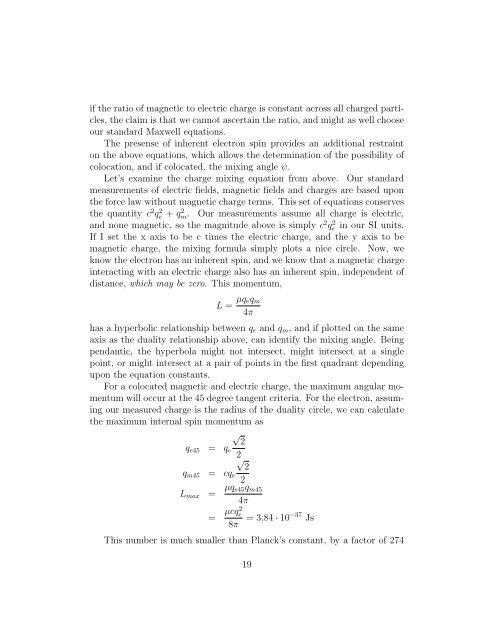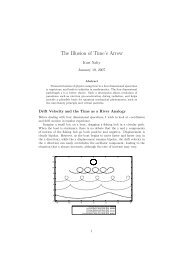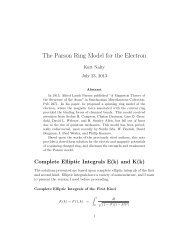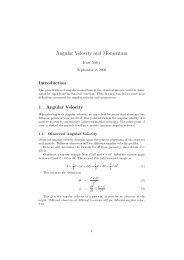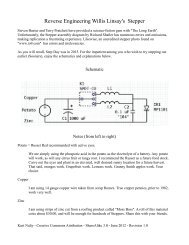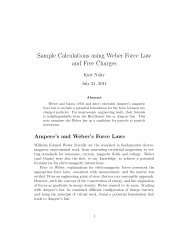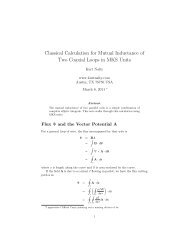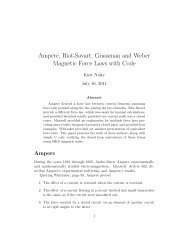Exercises with Magnetic Monopoles - Kurt Nalty
Exercises with Magnetic Monopoles - Kurt Nalty
Exercises with Magnetic Monopoles - Kurt Nalty
Create successful ePaper yourself
Turn your PDF publications into a flip-book with our unique Google optimized e-Paper software.
if the ratio of magnetic to electric charge is constant across all charged particles,<br />
the claim is that we cannot ascertain the ratio, and might as well choose<br />
our standard Maxwell equations.<br />
The presense of inherent electron spin provides an additional restraint<br />
on the above equations, which allows the determination of the possibility of<br />
colocation, and if colocated, the mixing angle ψ.<br />
Let’s examine the charge mixing equation from above. Our standard<br />
measurements of electric fields, magnetic fields and charges are based upon<br />
the force law <strong>with</strong>out magnetic charge terms. This set of equations conserves<br />
the quantity c 2 qe 2 + qm.<br />
2 Our measurements assume all charge is electric,<br />
and none magnetic, so the magnitude above is simply c 2 qe 2 in our SI units.<br />
If I set the x axis to be c times the electric charge, and the y axis to be<br />
magnetic charge, the mixing formula simply plots a nice circle. Now, we<br />
know the electron has an inherent spin, and we know that a magnetic charge<br />
interacting <strong>with</strong> an electric charge also has an inherent spin, independent of<br />
distance, which may be zero. This momentum,<br />
L = µq eq m<br />
4π<br />
has a hyperbolic relationship between q e and q m , and if plotted on the same<br />
axis as the duality relationship above, can identify the mixing angle. Being<br />
pendantic, the hyperbola might not intersect, might intersect at a single<br />
point, or might intersect at a pair of points in the first quadrant depending<br />
upon the equation constants.<br />
For a colocated magnetic and electric charge, the maximum angular momentum<br />
will occur at the 45 degree tangent criteria. For the electron, assuming<br />
our measured charge is the radius of the duality circle, we can calculate<br />
the maximum internal spin momentum as<br />
q e45 = q e<br />
√<br />
2<br />
2<br />
q m45 = cq e<br />
√<br />
2<br />
2<br />
L max = µq e45q m45<br />
4π<br />
= µcq2 e<br />
8π<br />
= 3.84 · 10−37 Js<br />
This number is much smaller than Planck’s constant, by a factor of 274<br />
19


